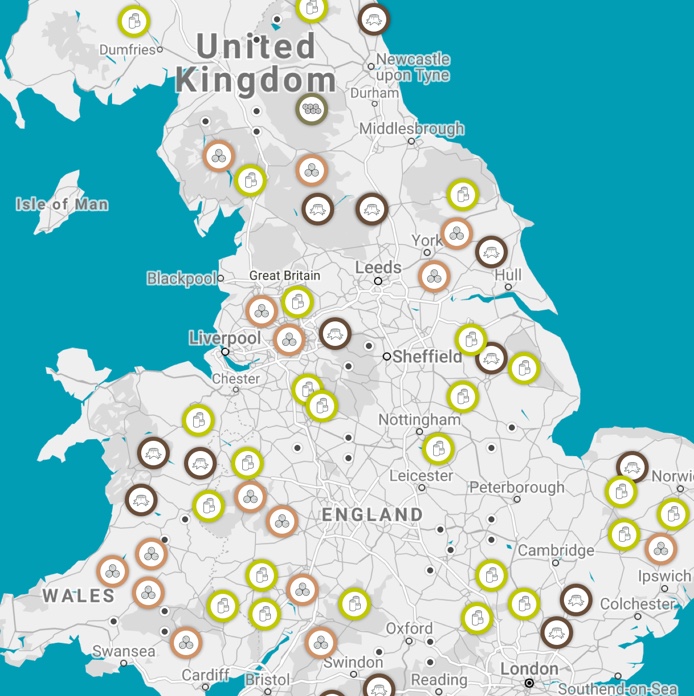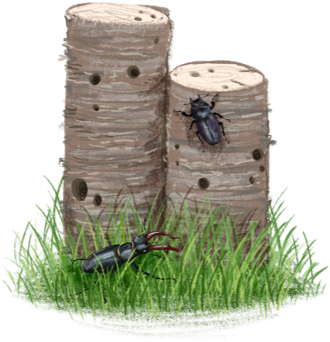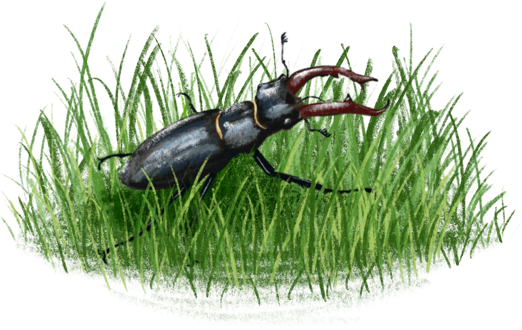Main Menu
Home » The importance of deadwood
Stumps, holes, rotting roots, dead limbs on a living tree and fallen trees are all forms of deadwood and each support a different community of fungi and invertebrates.
Deadwood is part of the life cycle of a tree. Thousands of invertebrates rely on deadwood and these in turn provide food for small mammals, birds and other invertebrates. Cracks in trees, or broken branches, allow fungi inside. As the fungi break down the wood inside, beetles and other invertebrates begin to eat the decaying wood. Eventually, the nutrients are recycled back into the soil.
Although known as a deadwood habitat, most of the specialised beetles that depend on it, eat wood that’s decaying rather than dead. The initial decay caused by fungi is the first step to creating this habitat, converting, or ‘softening’, the wood. They create the space and the conditions for invertebrates to flourish. This process of fungi-assisted tree hollowing is a natural part of the ageing process and can help extend the life of an ancient tree.
It can be as simple as not tidying up fallen deadwood or keeping a stump in place after a tree has been felled or has fallen. Or you can build your own log pile from logs and twigs.
Where you place your log pile determines what will use it. In full sun it may attract solitary bees. In more shady conditions centipedes, earthworms and frogs. You’ll need to partially bury logs to provide the right conditions for stag beetles. Learn more about how to build a log pile or log pyramid for stag beetles here. Stag beetles need deadwood, in contact with the soil or preferably underground. Females lay their eggs in soil very close to rotting wood. Once the larvae hatch, they feed on the rotting wood and will rely on it as a food source for several years.
For inspiration, have a look at the gallery and see how others have designed their log piles and pyramids for stag beetles.



